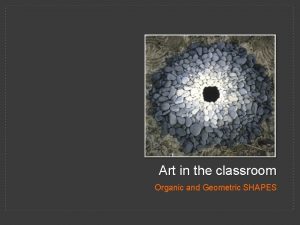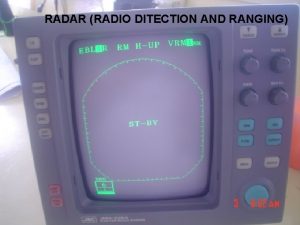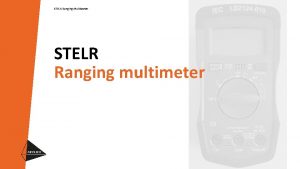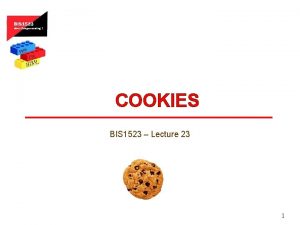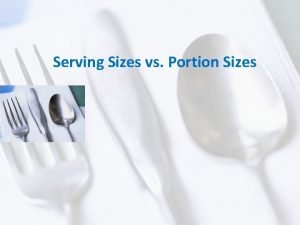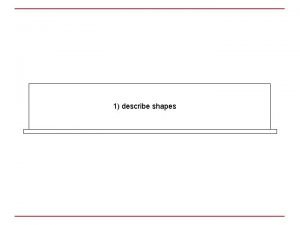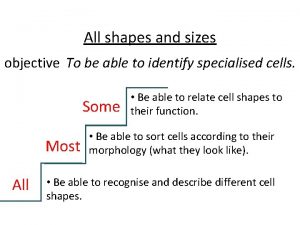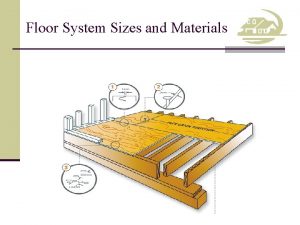Cookies come in all shapes and sizes ranging
























- Slides: 24


Cookies come in all shapes and sizes ranging from small cookies served with tea to oversized cookies that are a dessert all by themselves • They come in a variety of flavors and textures. Some are sweet and crisp while others may be buttery with a soft chewy texture • Knowing how various ingredients and methods influence the characteristics of a cookie is important when trying to achieve a particular finished product. •

The flavor of cookies is primarily determined by the quality of the ingredients that make up the dough. • Proper proportion of ingredients is also essential. Therefore, follow recipes carefully and measure ingredients exactly. •

Choosing high-gluten flour can make cookies tough. • Crisper cookies have a larger proportion of sugar. • Softer cookies contain more fat and moisture. • Chewy cookies get their texture from a higher amount of sugar combined with moisture, as well as more eggs. •

Mixing and baking procedures also affect a cookie’s texture. • Over-mixing the dough will develop too much gluten creating a tough finished product. • Baking too long or at a temperature that is too high usually results in a dry, hard cookie. •

Shaping raw dough so the end product has a pleasing, attractive appearance is an important step for creating a quality cookie. • Ensuring that the shape is uniform for all the cookies is key. • • The portioning of the dough must also be consistent so the cookies are the same size.

Baking at the proper temperature and for the proper length of time is essential for proper color. This also ensures that the dough spreads properly • Remove cookies from the oven when the bottoms and edges turn golden brown. Allow them to firm up slightly before removing them from the pan to avoid tearing or breaking the cookies. •

Un de rm ixe d Spreads too much o Spreads too little Too soft Pale Color Dark Color Too mu ch sug ar Lac k of sug ar Too mu ch liqu id Lac k of liqu id Baking temper ature too high o o o Baking temper ature too low o o o Too Lac mu k of ch fat o o Tough/hard Crumbles Ov er mix ed o o o o o


Cookie Problems. . .



How easy cookies are to make becomes clear when you learn the methods for mixing cookie dough. • There are two common methods for making cookie dough—the one-stage method and creaming method. • Both methods are done with an electric mixer using the paddle attachment. •

The one-stage method is the simplest way to make cookie dough. • You place all the ingredients into the bowl and mix. • Allow two to three minutes at moderate speed to fully blend all the ingredients. • • Overmixing can result in tough dough.

The first step in the creaming method is to mix the butter or shortening with the sugar and spices until smooth. • Next, eggs and liquids are added and mixed until incorporated. • Finally, the flour and leavening agent are added and blended. Since the flour is added last, gluten is less likely to overdevelop using this method. •

Cookies can be classified by the method used to form the cookie. • Each technique creates a uniquely shaped cookie. •

Drop cookies are the easiest and most common method of forming cookies. • They are made by dropping small amounts of dough onto a sheet pan. • A portion scoop (disher) is a good tool for creating equalsized cookies. •

During baking, the small mounds of dough spread into flat cookies. • When portioning drop cookies, allow enough space between the drops of dough to allow the cookies to spread during baking. • Chocolate chip and oatmeal cookies are often made using the drop method. •

To make rolled cookies, cookie dough is rolled out into a thin sheet and a cutter is used to cut cookies into desired shape. • The cut cookies are transferred to a sheet pan and baked. • The sugar cookie is a popular rolled cookie. •

Spritz cookies are made from soft cookie dough that is forced through a pastry bag to form shapes such as rosettes, • shells and scrolls. Some bakeshops use a special cookie press to make these cookies. The dough is pressed through a specially shaped die to create specific shapes. •

Sheet cookies are made by evenly spreading dough or batter onto a sheet pan. • The entire sheet pan is baked and later the sheet is cut into individual cookies. • • Brownies are popular sheet cookies This method of forming cookies has the advantage of saving labor. •

Icebox cookies are made by forming cookies dough into a log, square, triangle, or other shape while the dough is still soft. • The shaped dough is wrapped in plastic wrap or parchment paper and refrigerated. • When fully chilled, the dough is firm and can be sliced into individual cookies. •

Each slice of dough is laid out on a sheet pan and baked to create individual cookies. • This technique makes it possible to create effect such as checkerboard or pinwheels by forming logs using different colors dough. •

Bar cookies are made by portioning cookie dough into approximate one-pound batches and forming it into a log about the length of a sheet pan. • The log is flattened and baked. Once the log has cooked and while it is still warm, it is sliced into oneinch segments to form cookies. These cookies are baked a second time to create a hard texture. • Biscotti are an example of popular bar cookies. •
 Men's shirt sizes are determined by their neck sizes
Men's shirt sizes are determined by their neck sizes Come rico come sano come pescado
Come rico come sano come pescado Opposing sizes shapes contrasting colors
Opposing sizes shapes contrasting colors Abbreviations and measuring techniques worksheet answers
Abbreviations and measuring techniques worksheet answers Half of 1 1/3 cup
Half of 1 1/3 cup These are shapes that seem to follow no rules.
These are shapes that seem to follow no rules. Taping surveying
Taping surveying Lunar laser ranging retroreflector array
Lunar laser ranging retroreflector array Ditection
Ditection Multimeter manual vs auto ranging
Multimeter manual vs auto ranging Cosmic ladder
Cosmic ladder Indian optical square in surveying
Indian optical square in surveying Name all the rays
Name all the rays Come lord jesus come and be born in our hearts lyrics
Come lord jesus come and be born in our hearts lyrics Come in come in and sit down
Come in come in and sit down Come in come in and sit down
Come in come in and sit down Edible tectonic plates
Edible tectonic plates Cookies frames and frame busting
Cookies frames and frame busting Six basic types of cookies
Six basic types of cookies Guninski attack
Guninski attack Oreo cookies and plate tectonics answers
Oreo cookies and plate tectonics answers Come holy spirit come inflame our souls with love
Come holy spirit come inflame our souls with love Hey come on out story
Hey come on out story Come thou fount come thou king
Come thou fount come thou king Past tense of sh
Past tense of sh





